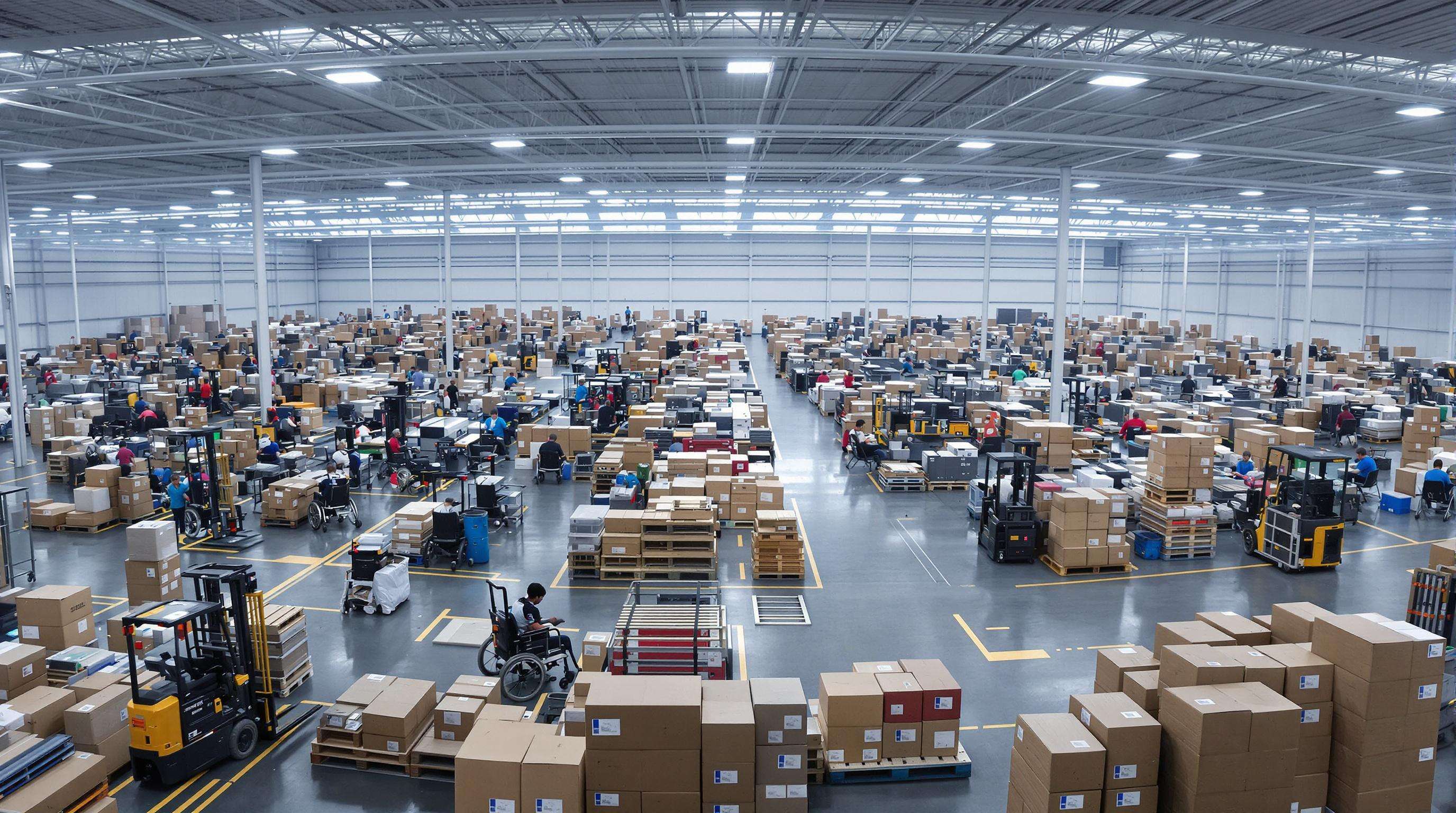
Manufacturing electric wheelchairs runs about 8 to 10 times the price tag of regular manual ones mainly because they need all those motors and fancy lithium batteries. Motor systems alone eat up around 15 to maybe 20 percent of what it costs to build one, while those lithium ion packs take up roughly a quarter to almost a third of expenses. On the flip side, standard manual chairs just require basic aluminum or steel frames which brings down manufacturing costs somewhere between two thirds and three quarters. Looking at numbers from the latest assistive tech market analysis in 2024, entry level electric versions hit around $950 wholesale when bought in bulk, whereas most manual models can be had for less than a hundred bucks each. That kind of price gap explains why many consumers still opt for traditional wheelchairs despite advances in mobility tech.
Mid-drive motors, used in 58% of premium electric wheelchairs, add $300–$500 per unit. Batteries requiring replacement every 18–24 months contribute $70–$450 in lifecycle costs. These components create a 40–50% price premium for electric models over manual equivalents in bulk orders.
High-volume purchases (500+ units) see 12–18% price reductions in Asian and South American markets due to standardized designs and labor-efficient assembly. Manual models accounted for 67.4% of global sales revenue in 2023, with distributors achieving 22–30% margins through economies of scale.
Manual wheelchairs have 80% lower post-sale support costs, with only 2–5% requiring repairs compared to 15–20% for electric models. However, electric units retain 35–50% higher resale value in secondary healthcare markets, helping offset their higher upfront investment for strategic distributors.

The global wheelchair manufacturing landscape centers on three primary hubs: Asia-Pacific (72% of manual production), North America (53% of electric R&D), and Europe (22% of premium models). Regional specialization drives efficiency—Vietnam’s workshops produce 7.2 million manual wheelchair components annually, while German automated plants assemble 85% of high-torque electric motors.
Supply chain scalability differs significantly:
Top manufacturers achieve 30–45% faster fulfillment via regional warehouse networks, maintaining 37-day inventory turnover for electric models and 28 days for manual units (MobilityTech 2024 Report). Just-in-time systems support bulk shipments of 500+ units, though electric orders require triple the lead time for customs-compliant battery documentation.
Electric wheelchairs mostly rely on aluminum these days because it offers great strength while being about 40% lighter than steel, plus it doesn't rust easily which matters a lot in damp climates. For manual wheelchairs though, steel still holds strong since manufacturers need to handle heavier loads sometimes reaching around 450 pounds, so portability takes a back seat there. We're seeing more composite materials popping up lately for parts that absorb shocks when moving over uneven ground. According to what several manufacturers report, frames made with aluminum tend to stay straighter longer too. One company noted their aluminum frames warped roughly 33% less than steel ones after about five years of regular use, which makes sense given how metal fatigues over time.
Manufacturers simulate over a decade of wear using cyclic load testing—subjecting frames to 500,000+ stress cycles. Electric motors undergo 1,000-hour terrain trials, with models exceeding ISO 7176-8 standards showing 92% fewer failures on inclines above 8°. Manual wheelchair hinges endure 20,000+ folding cycles to ensure reliability in urban commuting.
Looking at hospital records shows that electric wheelchairs require about 35 percent fewer parts replaced compared to regular manual ones after three years. This is mainly because they come with sealed motors that keep dirt and dust out better. When it comes to home care situations, wheelchairs made from aluminum frames actually cost around 18% less to maintain than those built with steel frames. However, quite a few people who use them still find problems sitting for long periods. About one in four users complain about discomfort when using these chairs for extended timeframes. Manufacturers have started working on this issue though, introducing new seat designs that are both padded and allow air circulation, making them much more comfortable for daily use.
Global sales of wheelchairs are expected to hit around $9.68 billion by the year 2032, largely because populations are getting older all over the world. Looking at 2023 data, most wheelchair users were adults accounting for about 74.4% of total usage. Arthritis sufferers and those recovering from strokes continue to drive demand in both adult and pediatric markets. According to World Health Organization estimates from 2023, by mid-century nearly one sixth of humanity will be aged 65 or above. This demographic shift means there's going to be sustained business opportunities for companies supplying equipment to medical facilities, rehabilitation clinics, and home healthcare services in coming decades.
Over 85% of OECD cities have implemented accessibility mandates since 2020, boosting demand for electric wheelchairs with curb-climbing features and 20+ mile battery ranges. Municipal barrier-free infrastructure programs have driven an 18% annual increase in electric model sales in metro areas, especially for foldable designs compatible with public transit and compact living spaces.
Sixty-seven percent of wholesale buyers now prioritize wheelchairs under 30 lbs, spurring innovation in lightweight materials:
Distributors must comply with reimbursement frameworks such as EU Directive 2021/1187, which requires ISO 7176 testing for subsidized wheelchairs. Emerging markets show 23% faster adoption of electric models where governments cover 50–70% of costs, while manual wheelchairs dominate in regions reliant on out-of-pocket payments.
Certifications like ISO 13485 and FDA clearance are key differentiators for manufacturers targeting global markets. These standards ensure safety compliance and production consistency—critical for bulk buyers purchasing 500+ units annually. In Europe, 78% of public tenders require ISO-certified quality management systems (2023 Mobility Sector Report).
Big name brands still hold most of the market because they've built those distributor connections over years. But companies from places like Southeast Asia and Eastern Europe are starting to take some business away with their cheaper manual models. We're seeing new players come into the game too, selling these modular electric versions for about 15 to maybe even 20 percent less than what others charge. That's making a real difference in areas where price matters most. Most folks running distribution centers in North America though? They stick with companies that have been around for at least ten years or so just because they want something reliable when it comes to getting products on time.
The way goods move through supply chains really affects how well wholesale operations run, particularly when dealing with electric wheelchairs that typically weigh between 200 to 250 pounds each. Most major European companies have set up central distribution points in Germany and the Netherlands, allowing them to get products out within two days to about nine out of ten places across the EU. Things work differently in North America where many warehouses use cross docking techniques to cut down on storage expenses. Manual wheelchairs account for roughly seven tenths of all mobility equipment shipped, so this approach helps keep costs manageable while still getting products where they need to go.
B2B e-commerce adoption among suppliers has grown 340% since 2020, enabling direct access for smaller regional distributors. Platforms with real-time inventory tracking and compliance documentation now handle 38% of sub-100-unit manual wheelchair orders—previously considered unprofitable through traditional channels.
Electric wheelchairs are generally more expensive due to additional components like motors and batteries, which contribute to about 40-50% higher costs compared to manual wheelchairs.
Bulk purchases of wheelchairs can lead to significant price reductions, ranging from 12-18% for manual models in certain markets, thanks to standardized designs and labor-efficient assembly.
Electric wheelchairs have higher initial costs but can retain 35-50% higher resale value. The choice depends on strategic considerations about long-term investments and market resale value.
Electric wheelchairs often use aluminum for lightweight and rust resistance, while manual wheelchairs can use steel for strength. Composite materials are becoming more popular for shock absorption.
Yes, there is a growing trend towards lightweight wheelchairs that are easy to transport and meet airline standards, driven by consumer preference.
 Hot News
Hot News2025-05-15
2025-05-15
2025-05-15
2025-05-15
 ONLINE
ONLINE ONLINE
ONLINE
Copyright © 2025Ningbo Ks Medical Tech Co., Ltd. all rights reserved - Privacy policy